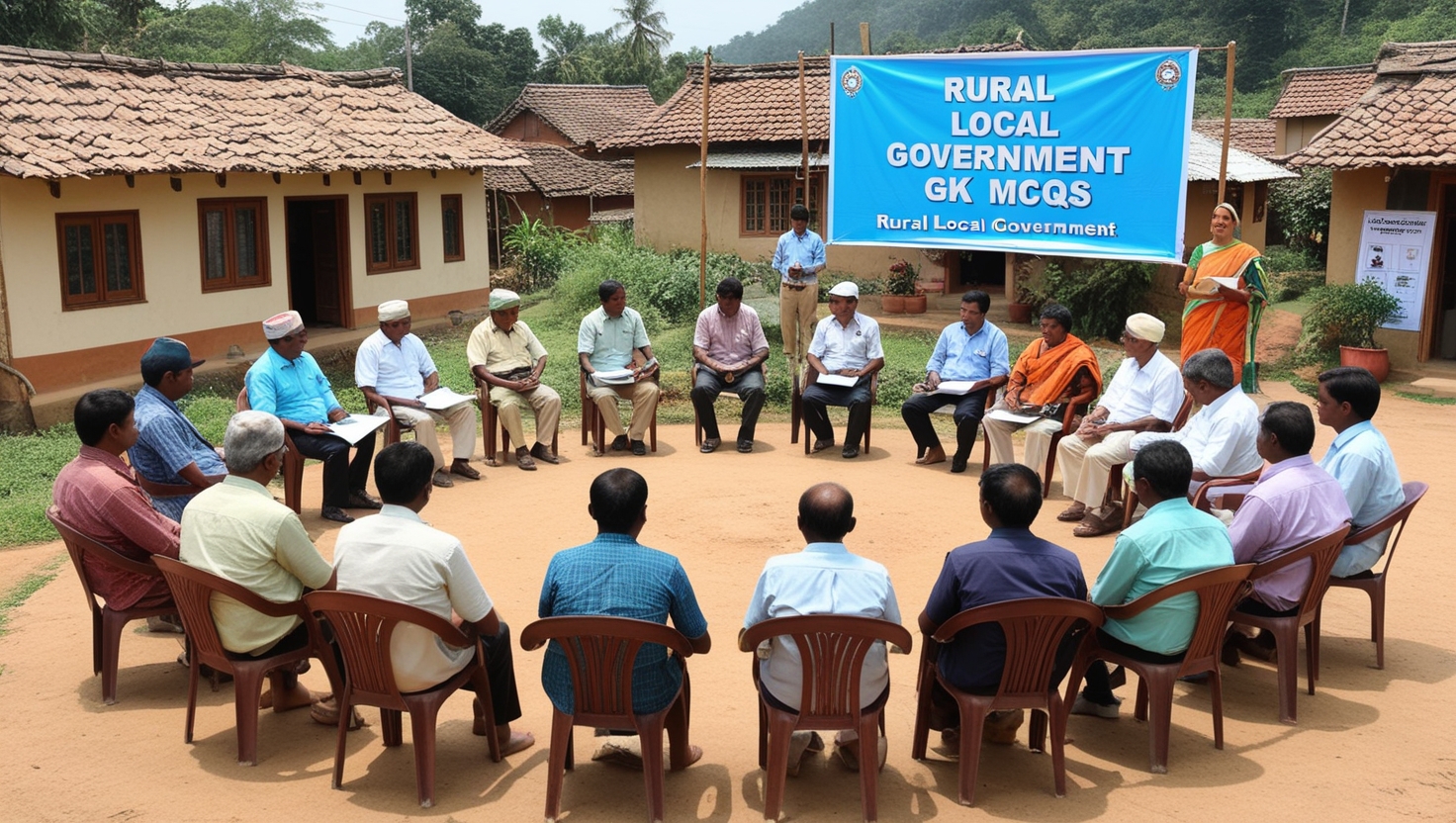
The Rural Local Government system in India plays a crucial role in grassroots governance and development. This article provides a collection of GK MCQs with Answers & Explanations in English, focusing on the structure, functioning, and significance of rural local bodies like Panchayats.
Designed for exam preparation, it covers essential concepts and key aspects of India’s rural governance, helping you gain a clear understanding of this important subject.
1. Which part was added to the Constitution of India by the 73rd Amendment Act of 1992?
- Part IX B
- Part X
- Part XI
- Part IX
Show Answer
Answer: Part IX
The 73rd Amendment Act of 1992 introduced a new Part-IX in the Constitution of India, titled ‘The Panchayats.’ This part includes provisions from Articles 243 to 243 O. It laid the foundation for the establishment of Panchayats as local self-government institutions in rural areas of India.
2. Which schedule was added to the Constitution by the 73rd Amendment Act, 1992?
- 10th
- 11th
- 12th
- None of the above
Show Answer
Answer: 11th
The 73rd Constitutional Amendment Act also added an Eleventh Schedule to the Constitution, which contains 29 functional items that fall within the purview of Panchayats. These items include areas such as agriculture, social forestry, rural electrification, markets and fairs, and more. This Schedule is related to Article 243-G, which deals with the powers, authority, and responsibilities of Panchayats.
3. How many functional items of the Panchayats are included in the Eleventh Schedule?
- 21
- 25
- 27
- 29
Show Answer
Answer: 29
The Eleventh Schedule, which was added by the 73rd Constitutional Amendment Act of 1992, contains 29 functional items of the Panchayats. It deals with Article 243-G.
4. Who can be members of the Gram Sabha?
- Anyone more than 18 years of age
- Registered voters in the area of a Panchayat
- Anyone more than 21 years of age
- None of the above
Show Answer
Answer: Registered voters in the area of a Panchayat
Gram Sabha is a vital component of the Panchayati Raj system and is a village assembly comprising all persons listed in the electoral rolls of a village falling within the area of a Panchayat. It includes all registered voters in the Panchayat’s village-level jurisdiction.
5. At which of the following levels are the members of the Panchayati Raj elected indirectly?
- Village level
- Intermediate level
- District level
- None of the above
Show Answer
Answer: None of the above
All members of the Panchayats at the village, intermediate, and district levels are elected directly by the people. Only the chairpersons at the intermediate and district levels are elected indirectly, chosen from among the elected members of the Panchayats.
6. The 73rd Amendment Act provides for the reservation of seats for Scheduled Castes and Scheduled Tribes at which of the following levels?
- Village
- Intermediate
- District
- All of the above
Show Answer
Answer: All of the above
The 73rd Amendment Act ensures the reservation of seats for Scheduled Castes and Scheduled Tribes in all three levels of Panchayats, in proportion to their population within the respective Panchayat areas.
7. The 73rd Amendment Act provides for the reservation of not less than how much seats out of the total number of seats for women?
- 1/3
- 1/2
- 1/4
- 1/6
Show Answer
Answer: 1/3
The Act also mandates that not less than one-third of the total number of seats in Panchayats should be reserved for women, including seats reserved for women from the Scheduled Castes and Scheduled Tribes.
8. Who is authorised to make any provision for the reservation of seats in any Panchayat or offices of chairperson in the Panchayat at any level in favour of backward classes?
- President
- Parliament
- Governor
- State legislature
Show Answer
Answer: State legislature
The legislature of a state is authorized by the 73rd Amendment Act to make provisions for the reservation of seats for backward classes in any Panchayat or offices of chairpersons at any level within the Panchayat system.
9. Which of the following states is exempt from the provision relating to the reservation of seats in Panchayats for Scheduled Castes?
- Assam
- Arunachal Pradesh
- Nagaland
- Manipur
Show Answer
Answer: Arunachal Pradesh
The state of Arunachal Pradesh has no Scheduled Castes, and therefore, the provision relating to the reservation of seats in Panchayats for Scheduled Castes is not applicable there.
10. What is the maximum term of a Panchayat in a state?
- 3 years
- 4 years
- 5 years
- 6 years
Show Answer
Answer: 5 years
The 73rd Amendment Act provides for a five-year term of office for the Panchayat at every level in a state. However, it can be dissolved before the completion of its term.







